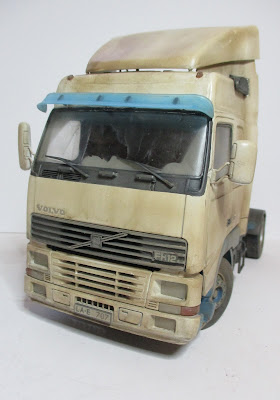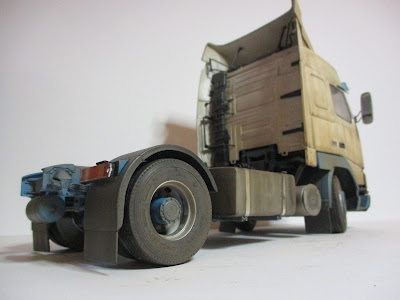It maybe time for a drink but in this case the plastering I am referring to is part of the landscaping process. I had a rough idea in my head of what I wanted to do and although there are some modelers out there who have the skills and mindset to plan and draw out their layouts in incredible detail before they start to build it I am unfortunately not blessed with such skills. If you want to see someone who has theses skills, I would suggest having a look at James Hilton's Blog and this post as an example.
In the meantime my method is very much one of physically putting things on the baseboard and seeing how they look and making alterations as necessary. With this layout, there is a quarry face with a hill and a bridge taking the road across the railway. Having already built the bridge that at least set up a reference point for the rest and I had already shaped the profile boards on the edge of the baseboard when I built it so that gave further reference points to work to. So in true Blue Peter fashion out came the mount card that I luckily had in stock and I built a contoured set of formers to get the basic shape. Hacking bits off and adding bits eventually gave me the shape I wanted complete with the road in place. I infilled the contours with some styrene packaging that I had and carved this to shape with a bread knief. All very messy but great fun!
With the contours set and the styrene in place it was time to give a surface to it all. For this I used paper towel cut into strips roughly 8 inches long by about 2 inches wide and used a thin mix of wall filler type plaster to coat and soak these as I laid them over the contours. Two or three layers of paper towel were laid to eventually give a firm shell over the card formers and styrene. It takes about a day to dry fully in a warmish house. If you are doing a similar job it can be messy so make sure you cover what you don't want plastered. How do I know........!
Next time it will be time for some scenics.




























